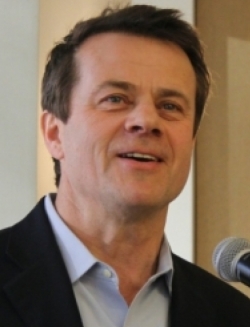Greg Kats
Greg is a widely recognized leader in the clean energy, green building, and decarbonization movements. As the founder and CEO of the Smart Surfaces Coalition, he established and led the largest urban cooling initiative in the United States. He is the recipient of the first US Green Building Council lifetime achievement award. Previously, Greg served as the director of financing for energy efficiency and renewable energy at the US Department of Energy. A fun fact is that Solar PV panels power his family’s home and car.
Day -
1 - Environment and sustainability - 16:30 - 17:00
Climate-proofing airports for the 21st century – smart surfaces and safe workers
Large, dark, impervious surfaces make airports particularly vulnerable to increasing outdoor air temperatures and larger storms associated with climate change. Roof and pavement materials absorb sunlight, warming the surrounding buildings and environment. Using satellite imagery and climate modeling, the San Francisco International Airport assessed the impact of existing surfaces on local air temperatures and explored smart surface solutions: cool, green and porous infrastructure. Cost-benefit analyses quantified the environmental, social and economic impact of future innovative surface investments. This evaluation led SFO to update its sustainable planning, design and construction standards to protect outdoor workers, reduce carbon emissions and enhance airport resilience.
The audience will learn:
- Dark, impervious surfaces, like pavement and roofs, absorb sunlight and increase temperatures, worsening worker health and productivity
- Smart surfaces improve environments and reduce temperatures for outdoor workers while reducing an airport’s impact on climate change
- Reflective, porous, and green surfaces cost-effectively reduce local temperatures, manage stormwater, cut energy use, lower emissions and safeguard worker health
- Cool surfaces mitigate climate warming by reflecting sunlight into space and reducing the amount of heat trapped by greenhouse
- How an operational airport incorporated smart surface requirements into its design and construction standards and guidelines

